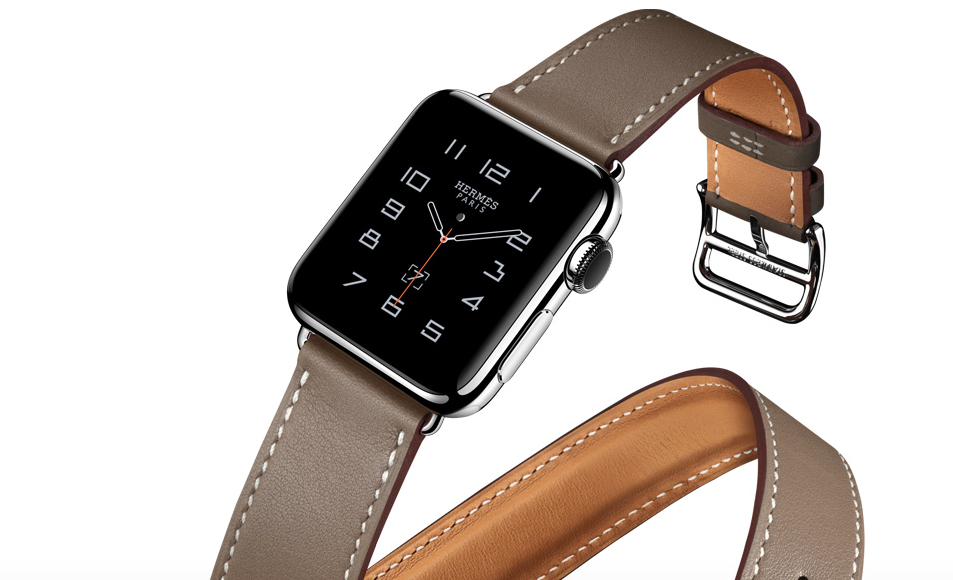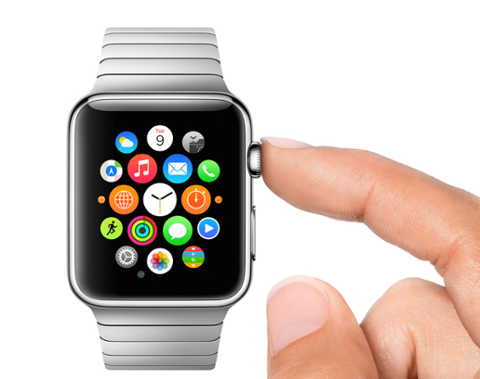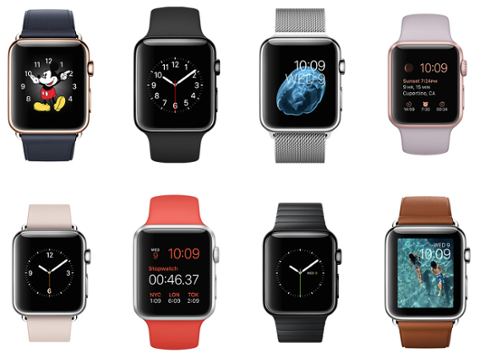 For Apple, being the largest company in the world (by market cap) comes with its own unique problems. Chief among them: all successes must be outsized. Take the case of the Apple Watch. Although Apple has so far refused to release concrete sales data, analysts estimate that the device has shipped as many as 20 million units since its release in early 2015. While an ordinary tech firm would cheerfully sacrifice a couple of executives on a stone altar in order to achieve that kind of number, it’s a proverbial drop in the bucket compared to Apple’s iPhone sales, which totaled 78.29 million last quarter alone. Given those outsized expectations, it’s easy for pundits to declare every Apple device that doesn’t achieve iPhone-sized numbers a failure. In addition, the wearables market has a whole hasn’t (yet) impacted the world to the same degree as smartphones, leading some to question whether the concept of wrist-based computing is a dud. “It's not too late for Apple Watch or high-end wearables in general, but these numbers are dismal and Apple needs a killer app to turn things around,” The Motley Fool thundered in April 2016. “As it stands now these device[s] simply don't do enough that's unique from the phones everyone carries anyway to make them worth it.” But that sort of assertion just isn’t fair, according to a recent Tweet by Benedict Evans, a partner at prominent venture-capital firm Andreessen Horowitz. “Apple Watch had its best quarter ever,” he wrote on Jan. 31. “Really big ongoing disconnect between tech and normal user expectations & satisfaction.” Or as Rene Ritchie put it in a new column for iMore: “It’s time to admit Apple Watch is a success.” Whatever side of the argument you fall on, it’s clear that Apple has no intention of mothballing its watch anytime soon. The company just released the beta for watchOS 3.2, the operating system that powers the Apple Watch, and it includes one key feature that could change the game: integration with SiriKit, which opens up the Siri digital assistant to third-party developers. “Users can ask Siri on their Apple Watch to book a ride, send a message, make a payment, or make other requests that your app can handle,” reads Apple’s documentation. “Apps that provide services in specific domains can use SiriKit to make those services available through Siri on watchOS.” Those curious about SiriKit can explore its programming guide, which covers everything from VoIP calling and messaging to car commands and e-payments. Will expanded voice activation make Apple Watch more appealing to users? Given the success of other voice-activated products such as the Amazon Echo and Google Home, which allow their owners to perform a large (and growing) number of tasks, it would seem foolhardy to dismiss the potential of SiriKit. But even with voice control, Apple will still need a store full of compelling apps if it wants the Apple Watch to evolve from debatable success to actual blockbuster. That’s where third-party developers come in, and it’s up to Apple at this year’s Worldwide Developer Conference (WWDC) and beyond to convince them that the Apple Watch is worth the development time.
For Apple, being the largest company in the world (by market cap) comes with its own unique problems. Chief among them: all successes must be outsized. Take the case of the Apple Watch. Although Apple has so far refused to release concrete sales data, analysts estimate that the device has shipped as many as 20 million units since its release in early 2015. While an ordinary tech firm would cheerfully sacrifice a couple of executives on a stone altar in order to achieve that kind of number, it’s a proverbial drop in the bucket compared to Apple’s iPhone sales, which totaled 78.29 million last quarter alone. Given those outsized expectations, it’s easy for pundits to declare every Apple device that doesn’t achieve iPhone-sized numbers a failure. In addition, the wearables market has a whole hasn’t (yet) impacted the world to the same degree as smartphones, leading some to question whether the concept of wrist-based computing is a dud. “It's not too late for Apple Watch or high-end wearables in general, but these numbers are dismal and Apple needs a killer app to turn things around,” The Motley Fool thundered in April 2016. “As it stands now these device[s] simply don't do enough that's unique from the phones everyone carries anyway to make them worth it.” But that sort of assertion just isn’t fair, according to a recent Tweet by Benedict Evans, a partner at prominent venture-capital firm Andreessen Horowitz. “Apple Watch had its best quarter ever,” he wrote on Jan. 31. “Really big ongoing disconnect between tech and normal user expectations & satisfaction.” Or as Rene Ritchie put it in a new column for iMore: “It’s time to admit Apple Watch is a success.” Whatever side of the argument you fall on, it’s clear that Apple has no intention of mothballing its watch anytime soon. The company just released the beta for watchOS 3.2, the operating system that powers the Apple Watch, and it includes one key feature that could change the game: integration with SiriKit, which opens up the Siri digital assistant to third-party developers. “Users can ask Siri on their Apple Watch to book a ride, send a message, make a payment, or make other requests that your app can handle,” reads Apple’s documentation. “Apps that provide services in specific domains can use SiriKit to make those services available through Siri on watchOS.” Those curious about SiriKit can explore its programming guide, which covers everything from VoIP calling and messaging to car commands and e-payments. Will expanded voice activation make Apple Watch more appealing to users? Given the success of other voice-activated products such as the Amazon Echo and Google Home, which allow their owners to perform a large (and growing) number of tasks, it would seem foolhardy to dismiss the potential of SiriKit. But even with voice control, Apple will still need a store full of compelling apps if it wants the Apple Watch to evolve from debatable success to actual blockbuster. That’s where third-party developers come in, and it’s up to Apple at this year’s Worldwide Developer Conference (WWDC) and beyond to convince them that the Apple Watch is worth the development time. Apple Watch: Huge Success or Miserable Fail?
 For Apple, being the largest company in the world (by market cap) comes with its own unique problems. Chief among them: all successes must be outsized. Take the case of the Apple Watch. Although Apple has so far refused to release concrete sales data, analysts estimate that the device has shipped as many as 20 million units since its release in early 2015. While an ordinary tech firm would cheerfully sacrifice a couple of executives on a stone altar in order to achieve that kind of number, it’s a proverbial drop in the bucket compared to Apple’s iPhone sales, which totaled 78.29 million last quarter alone. Given those outsized expectations, it’s easy for pundits to declare every Apple device that doesn’t achieve iPhone-sized numbers a failure. In addition, the wearables market has a whole hasn’t (yet) impacted the world to the same degree as smartphones, leading some to question whether the concept of wrist-based computing is a dud. “It's not too late for Apple Watch or high-end wearables in general, but these numbers are dismal and Apple needs a killer app to turn things around,” The Motley Fool thundered in April 2016. “As it stands now these device[s] simply don't do enough that's unique from the phones everyone carries anyway to make them worth it.” But that sort of assertion just isn’t fair, according to a recent Tweet by Benedict Evans, a partner at prominent venture-capital firm Andreessen Horowitz. “Apple Watch had its best quarter ever,” he wrote on Jan. 31. “Really big ongoing disconnect between tech and normal user expectations & satisfaction.” Or as Rene Ritchie put it in a new column for iMore: “It’s time to admit Apple Watch is a success.” Whatever side of the argument you fall on, it’s clear that Apple has no intention of mothballing its watch anytime soon. The company just released the beta for watchOS 3.2, the operating system that powers the Apple Watch, and it includes one key feature that could change the game: integration with SiriKit, which opens up the Siri digital assistant to third-party developers. “Users can ask Siri on their Apple Watch to book a ride, send a message, make a payment, or make other requests that your app can handle,” reads Apple’s documentation. “Apps that provide services in specific domains can use SiriKit to make those services available through Siri on watchOS.” Those curious about SiriKit can explore its programming guide, which covers everything from VoIP calling and messaging to car commands and e-payments. Will expanded voice activation make Apple Watch more appealing to users? Given the success of other voice-activated products such as the Amazon Echo and Google Home, which allow their owners to perform a large (and growing) number of tasks, it would seem foolhardy to dismiss the potential of SiriKit. But even with voice control, Apple will still need a store full of compelling apps if it wants the Apple Watch to evolve from debatable success to actual blockbuster. That’s where third-party developers come in, and it’s up to Apple at this year’s Worldwide Developer Conference (WWDC) and beyond to convince them that the Apple Watch is worth the development time.
For Apple, being the largest company in the world (by market cap) comes with its own unique problems. Chief among them: all successes must be outsized. Take the case of the Apple Watch. Although Apple has so far refused to release concrete sales data, analysts estimate that the device has shipped as many as 20 million units since its release in early 2015. While an ordinary tech firm would cheerfully sacrifice a couple of executives on a stone altar in order to achieve that kind of number, it’s a proverbial drop in the bucket compared to Apple’s iPhone sales, which totaled 78.29 million last quarter alone. Given those outsized expectations, it’s easy for pundits to declare every Apple device that doesn’t achieve iPhone-sized numbers a failure. In addition, the wearables market has a whole hasn’t (yet) impacted the world to the same degree as smartphones, leading some to question whether the concept of wrist-based computing is a dud. “It's not too late for Apple Watch or high-end wearables in general, but these numbers are dismal and Apple needs a killer app to turn things around,” The Motley Fool thundered in April 2016. “As it stands now these device[s] simply don't do enough that's unique from the phones everyone carries anyway to make them worth it.” But that sort of assertion just isn’t fair, according to a recent Tweet by Benedict Evans, a partner at prominent venture-capital firm Andreessen Horowitz. “Apple Watch had its best quarter ever,” he wrote on Jan. 31. “Really big ongoing disconnect between tech and normal user expectations & satisfaction.” Or as Rene Ritchie put it in a new column for iMore: “It’s time to admit Apple Watch is a success.” Whatever side of the argument you fall on, it’s clear that Apple has no intention of mothballing its watch anytime soon. The company just released the beta for watchOS 3.2, the operating system that powers the Apple Watch, and it includes one key feature that could change the game: integration with SiriKit, which opens up the Siri digital assistant to third-party developers. “Users can ask Siri on their Apple Watch to book a ride, send a message, make a payment, or make other requests that your app can handle,” reads Apple’s documentation. “Apps that provide services in specific domains can use SiriKit to make those services available through Siri on watchOS.” Those curious about SiriKit can explore its programming guide, which covers everything from VoIP calling and messaging to car commands and e-payments. Will expanded voice activation make Apple Watch more appealing to users? Given the success of other voice-activated products such as the Amazon Echo and Google Home, which allow their owners to perform a large (and growing) number of tasks, it would seem foolhardy to dismiss the potential of SiriKit. But even with voice control, Apple will still need a store full of compelling apps if it wants the Apple Watch to evolve from debatable success to actual blockbuster. That’s where third-party developers come in, and it’s up to Apple at this year’s Worldwide Developer Conference (WWDC) and beyond to convince them that the Apple Watch is worth the development time. 

